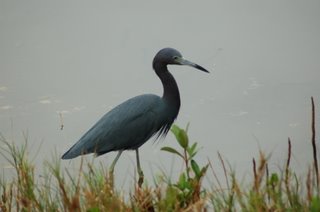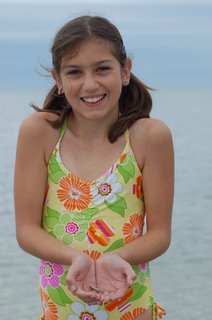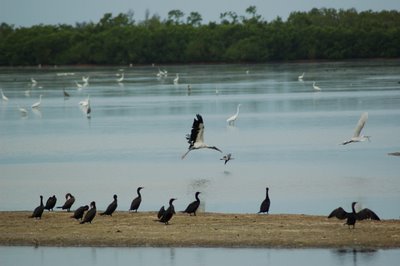
Early Thanksgiving morning, a group of intrepid adventurers set out on the East End for a Sanibel Sea School early morning beach walk. One of the great things about a beach walk is that the rewards are directly related to the effort – the more you look, the more you find. And let’s face it, these days, few things in life are so simple and so direct.
And so we set forth, sleepy and cold to discover what the sea held for us. It was an unusually low tide and many sand dollars were evident just beneath the sand on the outer bar and there were other fascinating things, but mostly everyday stuff. When all of sudden, the kids let forth shrill, brilliant screams of delight. There amongst the red algae, in the moat between sandbars, they found a seahorse. A spectacular specimen – beautiful brown with long stripes – appropriately enough, a Lined Seahorse; this one was nearly five inches long.
Seahorses are fabulous animals. They, of course, are fish and while mostly overlooked, they are not really all that uncommon on Sanibel. They prefer seagrass meadows and mangrove habitats. There are about 50 species worldwide; we have two. And as a whole, they are not well known to science, but what we do know is that they are pretty amazing.
Most fish are broadcast spawners. They release eggs and sperm into the water to be fertilized, and the fry to fend for themselves, from the moment of conception, with no parental care. Some fish make nests and tend their eggs, and others actually carry developing eggs in their mouths. But in seahorses, the male literally becomes pregnant - a female deposits her eggs in a special pouch on the abdomen of the male. He fertilizes the eggs and seals the pouch until the eggs hatch and the young swim away. As they develop, the male provides nutrition and oxygen to the embryos, and he regulates the salinity of the pouch. The eggs mature in two to four weeks, and then the father goes into labor and squeezes out the 100 or so young. At that point, they are on their own.
And, most seahorses appear to be monogamous; they become pair-bonded and repeatedly mate with the same mate; some for a season, and some perhaps for life. The female comes around once or so a day and checks in with her mate. They dance for a few minutes and then go their separate ways until the next day. And usually within hours of the male releasing his brood, they undergo ritualistic mating dances lasting up to eight or nine hours. Their gyrating dances culminate with the female depositing more eggs to start the cycle again.
Fascinating stuff, but, early that blustery November morning, all these facts are lost; as well they should be, to the sheer joy of discovery of a great big old seahorse alive and well, in the moat between the sandbars, in the shadow of the Sanibel Lighthouse. One of the many things to be thankful for on our Sanctuary Island.














